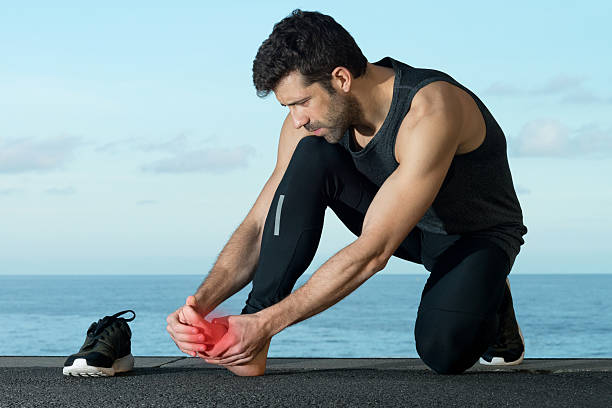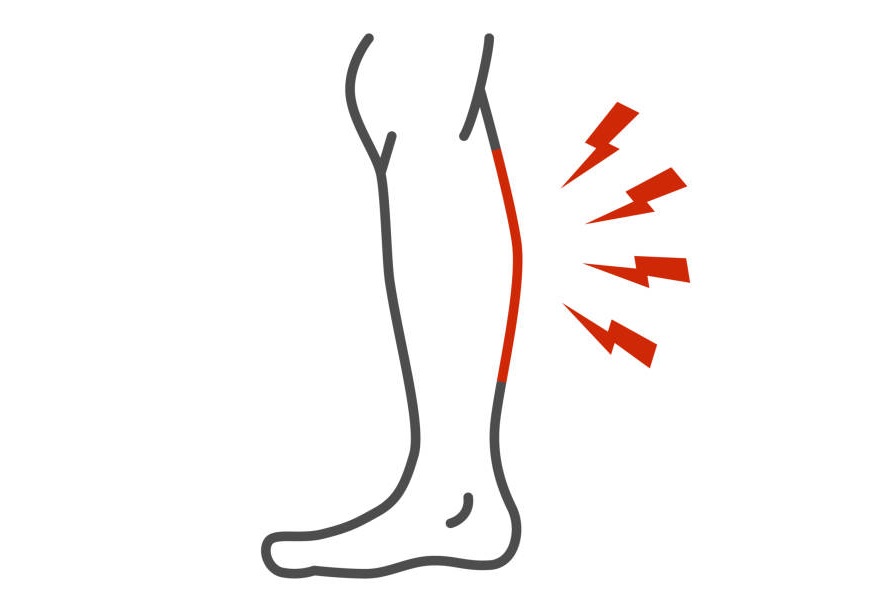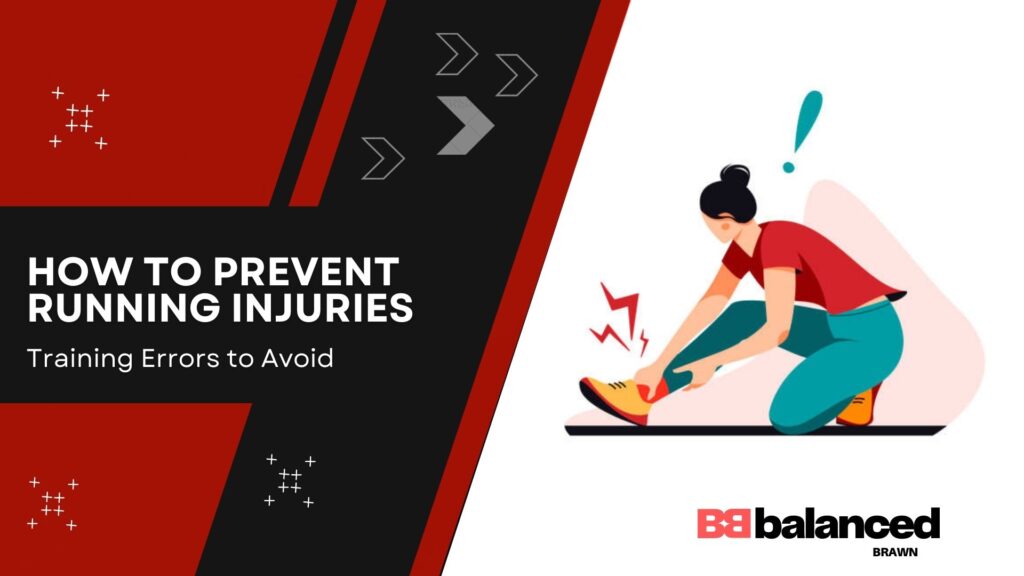Table of Contents
Running is one of the most accessible and beneficial forms of exercise. However, with all those miles pounding the pavement, injuries are unfortunately common. As a runner myself, I’ve dealt with my fair share of achy knees, sore hips, and tight calves.
The good news is that we can minimize our injury risk by avoiding key training errors. In this comprehensive guide, we’ll cover how to prevent running injuries by optimizing your training habits, recovery, strength training, gear, and more. Read on to make running pain-free!
The Most Common Running Injuries
Before we dive into prevention, let’s briefly overview the most prevalent running injuries:
1. Knee Injuries

The most feared knee injury is the runner’s knee (patellofemoral pain syndrome). You’ll feel pain around or behind your kneecap that gets worse when going downhill. IT band syndrome causes outer knee pain due to tightness in your iliotibial band.
2. Stress Fractures

Small microfractures in your foot or lower leg bones due to overuse. You’ll feel localized soreness that intensifies over several weeks if not treated properly.
3. Achilles Tendinitis

Inflammation of your Achilles tendon causes stiffness and pain just above your heel, especially when pushing off.
4. Shin Splints

Pain along your shin bone (tibia) caused by muscle tears and bone stress from too much, too soon. Feel it on the front outside part of your shin.
5. Plantar Fasciitis

Microtears and inflammation in the thick connective tissue along the bottom of your foot. You’ll feel stabbing heel pain taking the first steps in the morning.
6. Hip Bursitis

Inflammation of the fluid-filled sacs (bursae) around your hip joint. Pain presents in the sides or back of the hips.
Training Errors That Commonly Cause Injuries

Now that we’ve covered the usual suspects, let’s explore the biggest training mistakes that set up runners for injury. Avoid these like the plague!
1. Ramping Up Mileage or Pace Too Quickly
This is one of the biggest causes of running injuries, especially for new runners. While it’s tempting to rapidly increase your mileage or start doing speed workouts, your tissues need time to adapt. As a general rule, don’t increase your weekly mileage by more than 10% per week.
Even veteran runners are susceptible after time off. Make sure you ease back into it rather than jumping into your old mileage. Slow and steady consistency over several months is the smartest way to build an injury-free running base.
2. Always Running at the Same Pace or Intensity
Running at the same pace every day pounds the same structures and overloads them. Similarly, interval training at max effort too often can lead to overuse.
Your body needs variety to develop balanced strength and durability. Rotate easier recovery runs with long runs and speed or hill sessions. Cross-training and rest days are also key.
3. Running Through Pain
“No pain, no gain” is not smart with running injuries! It often leads to small nagging issues spiraling into major layoffs.
Don’t ignore those first signs of tightness or achiness. Address them immediately by icing, resting, stretching, and rolling. Nipping problems in the bud early is crucial.
4. Prioritizing Mileage Over Recovery
When training for an event like a marathon, there’s a tendency to focus solely on the long runs. But all those miles won’t do you any good if you’re limping at the starting line!
Carve out time for self-massage, sleep, nutrition, and lighter days. Listen to your body rather than rigid training plans. You can’t maximize running gains without optimizing recovery too.
5. Improper Breathing and Bracing
Many runners breathe shallowly in their chest when they should be belly breathing to use their diaphragm. Bracing your core properly also ensures optimum stability and alignment on the run.
Practice diaphragmatic breathing drills and core bracing to avoid injury down the road. Proper breathing and bracing technique is the foundation for resilience.
6. Worn Out and Ill-Fitting Shoes
It’s easy to put off buying new shoes but surpassing the recommended 300-500 mile lifespan hugely elevates injury risk. Old shoes lose their stability, cushioning, and shock absorption.
Don’t just track mileage either; replace them sooner if the outsoles look worn or your feet start aching. Be sure to get properly fitted for the right shoe model for your foot type too.
7. Lack of Strength Training
Strong muscles provide essential support to take the burden off your joints and connective tissues. However, many runners fail to supplement their cardio with targeted strength work.
Incorporate hip, glute, core, and even upper body exercises into your routine. Not only will it correct muscle imbalances, but you’ll see major performance benefits as well.
8. Insufficient Calorie and Nutrient Intake
Running high mileage puts greater needs on your body. Consuming sufficient calories gives you the energy to perform and recover optimally. Nutrient timing and getting enough protein for tissue repair is also vital.
Don’t cut calories too aggressively when training. Eat quality whole foods with carbs to fuel runs and plenty of lean protein. Supplement with recovery shakes when needed.
9. Overdoing Race Pace Runs
It’s crucial to work on your goal race pace but overemphasizing these hard sessions too often can backfire. They create cumulative fatigue if not balanced properly.
Do the bulk of your runs at easier paces. Use races and time trials to gauge fitness rather than grinding out intense workouts weekly. Be patient and focus on building your base first.
10. Insufficient Dynamic Stretching and Warm-Ups
Static stretching when cold can strain muscles. But doing dynamic moves pre-run increases blood flow, joint mobility, and flexibility.
Make time to perform leg swings, high knees, butt kicks, and other active moves before heading out. Your tissues will be primed for the impact to come.
SMART Injury Prevention Strategies

Now let’s move on to some positive, proactive injury prevention strategies you can implement right away:
1. Follow the 10% Rule for Increasing Weekly Mileage
As mentioned earlier, limit mileage jumps to no more than 10% per week. This allows your bones, muscles, and connective tissue to adapt safely.
Spread this increase over your weekly runs rather than just the long run too. You’ll make steadier progress over several months by adding just 1-3 miles per run. Patience pays off!
2. Rotate Between Hard and Easy Run Days
Plan out your training week to alternate harder sessions with easier recovery days. After long or intense runs, take the next day off or just do some light walking.
Separating elements like long runs, intervals, and tempo work prevents overuse injuries. Don’t try to max out on all of these simultaneously.
3. Listen to Your Body and Take Unplanned Rest Days
Perfectly executing a training plan paper is great, but your body must come first. Be flexible and take more rest as needed if you feel off or overly fatigued.
Adjust your schedule going forward to prevent similar issues. Unplanned days off now and then will extend your running career in the long term.
4. Incorporate Strength Training and Crosstraining
Complement your running with at least 2-3 strength sessions per week. Squats, lunges, and deadlifts strengthen your posterior chain. Core exercises improve stability and efficiency.
Once or twice a week, swap a run for crosstraining like cycling, swimming, or rowing. The variety challenges muscles in new ways to bulletproof your body.
5. Stretch Regularly Using Dynamic and Static Methods
Stretch daily to keep your muscles flexible and balanced. Foam rolling addresses tight spots and trigger points.
Before runs, perform dynamic moves like leg swings and walking lunges. After running or workout sessions, do static stretching when your tissues are warm.
6. Replace Your Shoes Every 300-500 Miles
Invest in 2-3 quality running shoe pairs and rotate them daily. Note mileage with apps like Strava or on the shoe tongue to ensure you max out 300-500 miles before replacing them.
Visit specialty running shops for gait analysis and expert fitting. Getting the right shoe for your foot strike pattern is a game-changer!
7. Run on Softer Surfaces or Trails Periodically
Pavement and concrete increase impact forces compared to softer surfaces like dirt trails, grass, or the beach. Switch it up a few days a week to give your joints and bones a break.
Trail runs work your body in different ways with varied terrain. Just start slow if it’s your first time to avoid tripping on roots and rocks.
8. Address Muscle Imbalances and Weak Points
Determine areas of tightness or weakness with self-tests, then drill corrective exercises. For example, glute bridges and fire hydrants target weak glutes and hip external rotators.
Tight hip flexors are common – stretch and foam roll them while strengthening your core. See a physiotherapist if you need experienced help.
9. Optimize Nutrition Before, During and After Runs
Eat easily digestible carbs like oats, bananas, or toast for 1-3 hours pre-run. Hydrate well too – sip water rather than guzzling. Fuel runs lasting over 60-90 minutes with sports drinks, gels, or chews.
Post-run, consume a mix of carbs and protein within 30-45 minutes. Chocolate milk, smoothies, and eggs work great for recovery nutrition.
10. Always Warm Up and Cool Down
Bookend every run with at least 5-10 minutes of warm-up and cool-down. This preps your body for activity and brings your heart rate down gradually after.
Perform dynamic drills pre-run then walk briskly, like during run walk intervals. Jog easily at the end before static stretching.
The Best Injury Treatment and Rehab Strategies

Even with smart training, sometimes injuries sneak up on you. Don’t panic – with the right response, most are totally treatable. Here are my top rehab tips:
- – Immediately stop running if an injury crops up. “Running through it” will make it exponentially worse.
- – Follow the R.I.C.E. method – rest, ice for 15 mins at a time, compress with a bandage or brace, and elevate the area.
- – Take OTC anti-inflammatories for a few days to control swelling and pain.
- – See a sports medicine doctor and/or physical therapist for an accurate diagnosis and personalized rehab plan.
- – Stick closely to the prescribed treatment and recovery timeline – don’t try to rush back too quickly.
- – Perform rehab exercises diligently like resistance band moves or balance training depending on the injury.
- – Utilize alternative cardio like cycling, swimming, and elliptical to maintain overall fitness without impact.
- – Ease back into running carefully on return – run walk intervals on soft surfaces at first before upping duration and intensity.
- – Wear any recommended bracing and continue strength moves to support the injured area going forward.
- – Make necessary training adjustments to avoid flare-ups or re-injury. Maintain your rehab routine even after resuming normal training.
Bottom Line: Train Smarter and Listen to Your Body
The best way to avoid running injuries is to optimize your training plan, not overdo it and address problems early. Stick to the 10% rule for increasing mileage, take regular rest days, and don’t run through emerging pain.
Strength training, crosstraining, dynamic stretching, and replacement shoes are your injury-prevention arsenal. Refuel properly for your running volume and correct muscle imbalances.
If you do sustain an injury, treat it properly with initial rest, ice, compression, and elevation. See a sports medicine professional for diagnosis and follow prescribed rehab diligently. Ease back into training carefully.
Remember that the goal is lifelong running enjoyment. Train consistently and listen to warning signs from your body. Patience and moderation will get you to the finish line feeling strong!
I hope these comprehensive tips help you continue to rack up pain-free miles for years to come. Let me know if you have any other questions – I’m happy to provide more guidance on specific injuries or training issues. Happy running!

